(This) This Time I'm Drawing the Line
What Is Line Art?
Line art, as the name might hint, is art that is focused on lines. I know what you’re thinking; “isn’t lots of art focused on lines?” and, yes, you do have a point. Lines are one of the seven elements of art, along with shape, texture, form, space, color and, & value. Lines are the sort of thing most art & artists focus on, in one way or another. Richard Long has a series of pieces focused on lines, starting with A Line Made By Walking, but it is not line art. This van Gough portrait has a heavy emphasis on lines, but it is not line art. This van Gough portrait has a heavy emphasis on lines, & it is line art. What’s the difference?
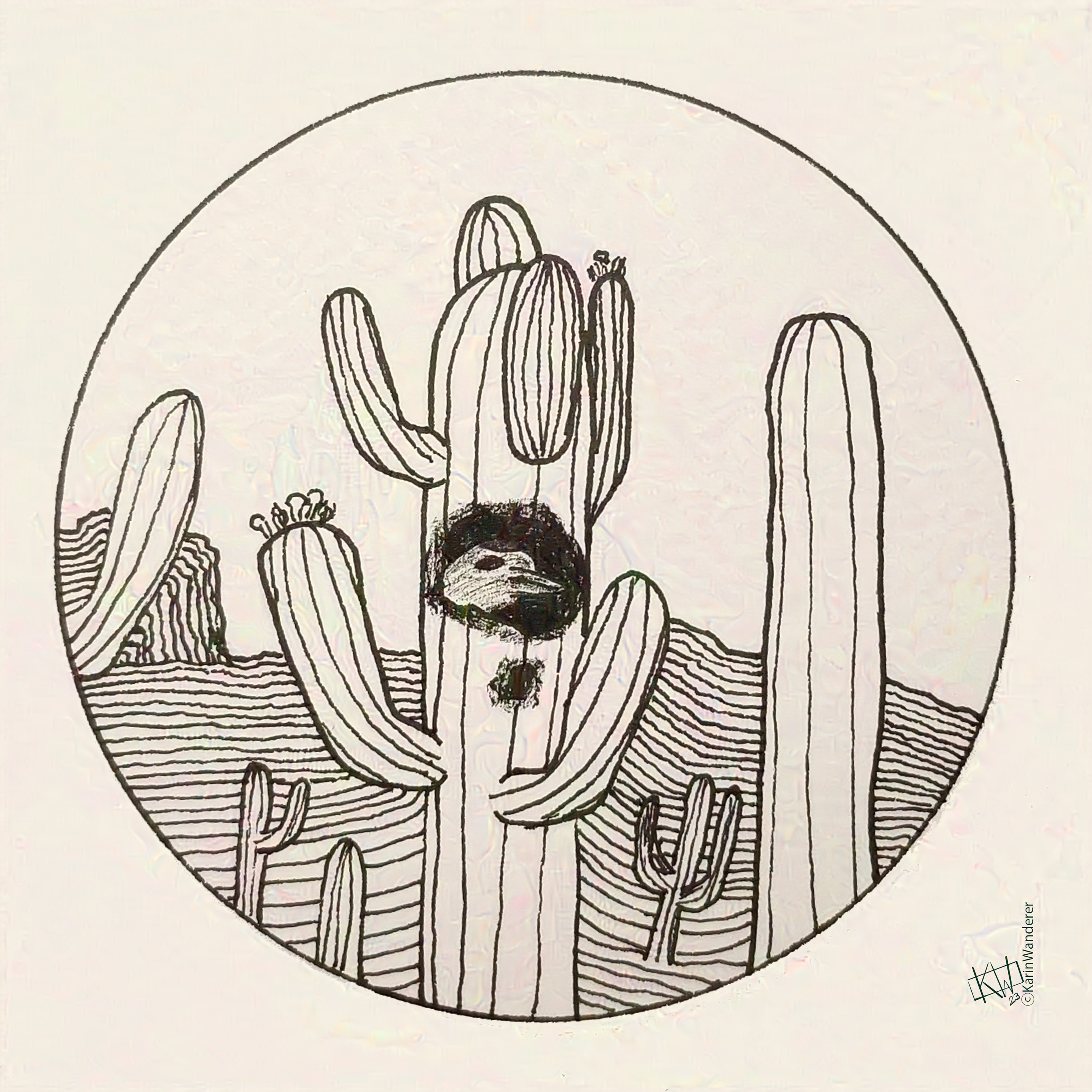 Is this line art, or line-y art?
Is this line art, or line-y art?
Line art is pretty minimalist. It doesn’t have shading or color graduation. In most cases the lines don’t even have any color, they are just black #ink on white paper. The drawing can be exact or abstract. It can be sketchy or a more polished work. As you can see, in spite of only being a line or lines, this form of art can represent a whole spectrum of subjects! It’s not perfectly black & white- even though it often is.
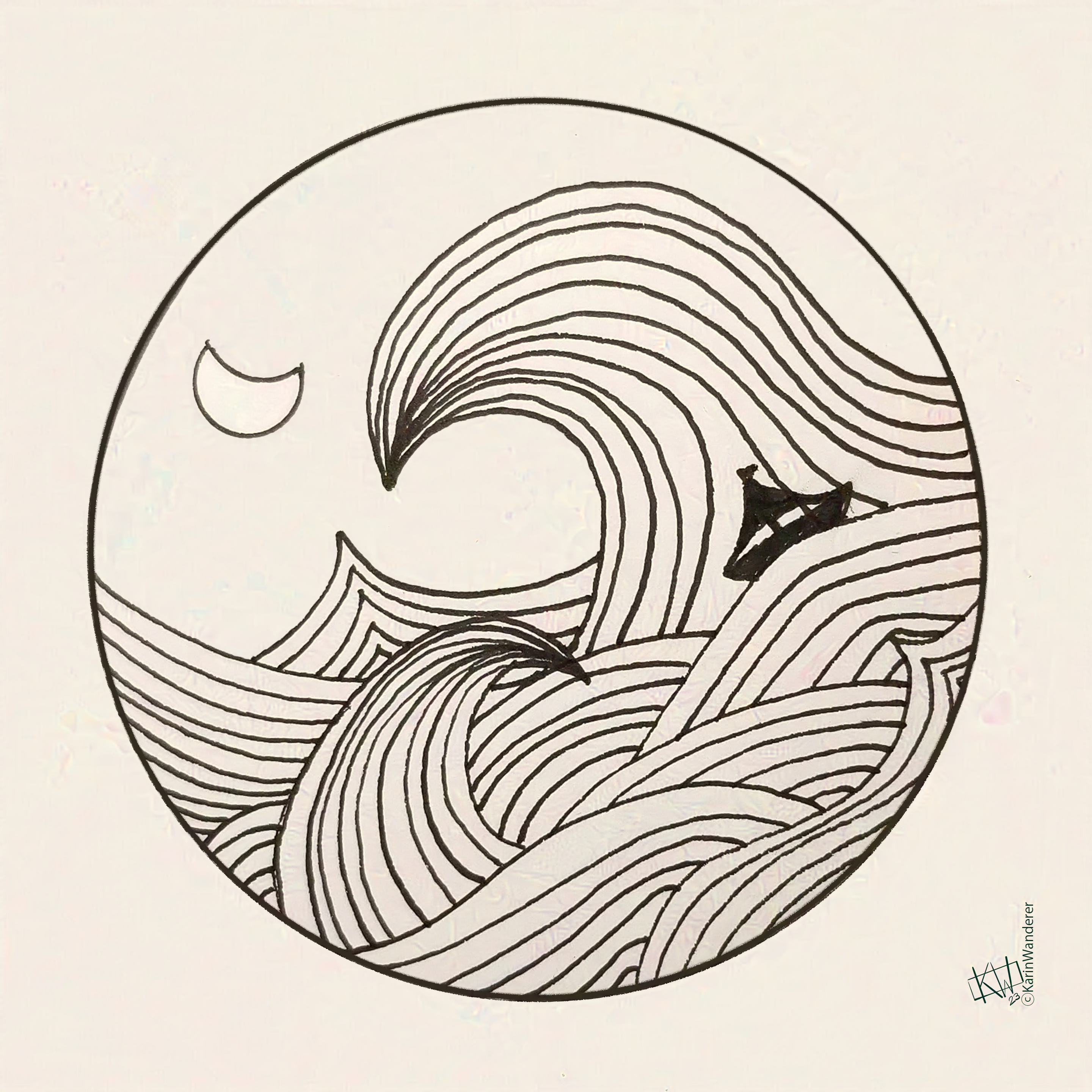
When Did It Start?
This sort of depends on who you ask, & how tightly you define line art. I think that the oldest art we have found- rock paintings & engravings fits the description of line art. This means line art is over 45,000 years old! Line art shows up again & again throughout human history. A mandala can be geometric line art. Line art was used in many printed illustrations before photographs, as it translates easily to a carved block of wood such as in sumizuri-e.
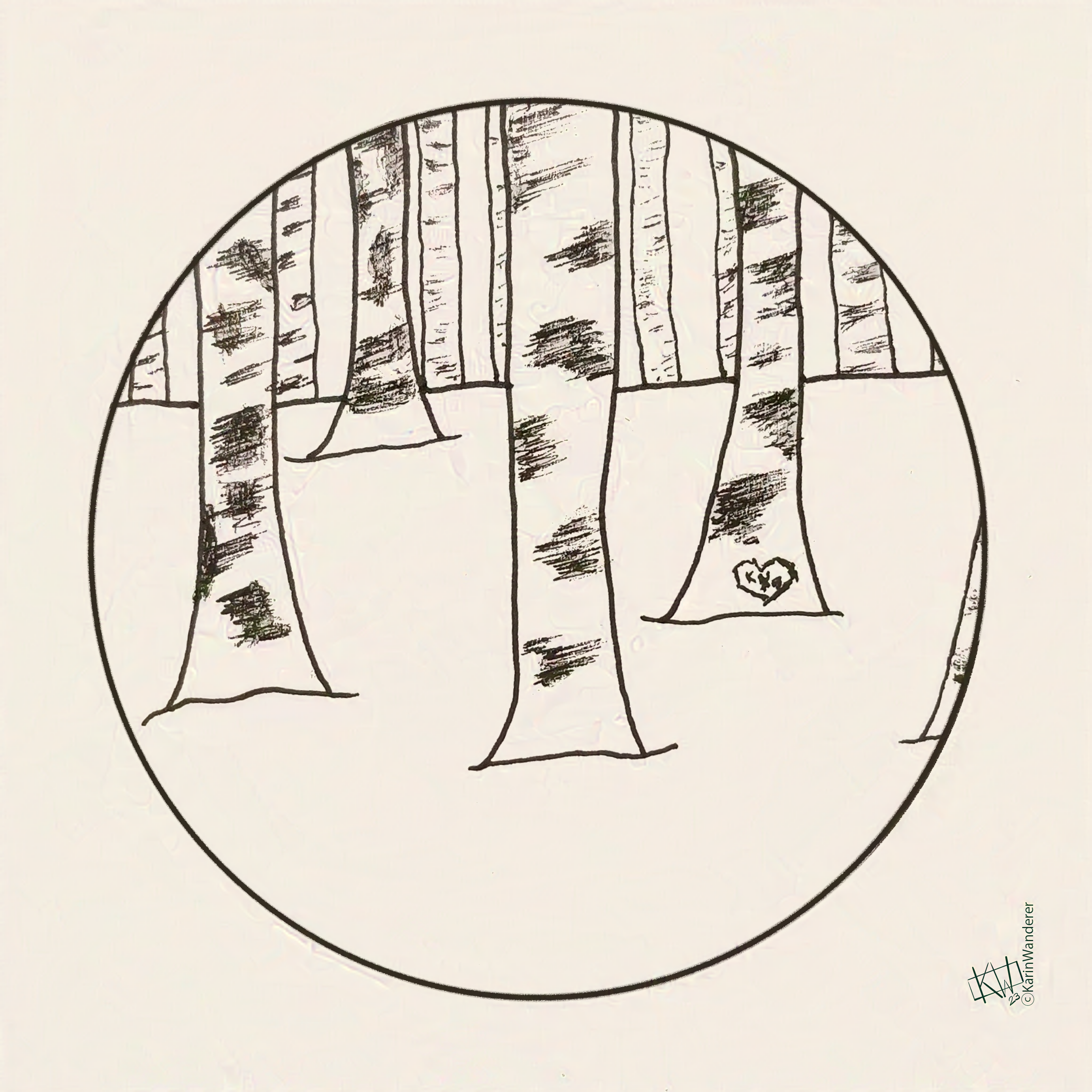
Who Does It?
Pablo Picasso is famous largely for his paintings. In recent years, however, his amazing line art has become exceedingly popular! Picasso drew each of these pictures with one continuous line, which is called lineography. Prints of his single-line animal drawings are available all over the internet, as much of his work is in the public domain at this point. I’ve talked about Andy Warhol’s printed art at length, but slightly less well-known is a blotted line technique that is a lot of fun! Henri Matisse also did some lovely line pieces. Paul Klee’s Burdened Children has lived rent-free in my head since I first saw it, along with a quote of his; “a line is a dot that went for a walk.”
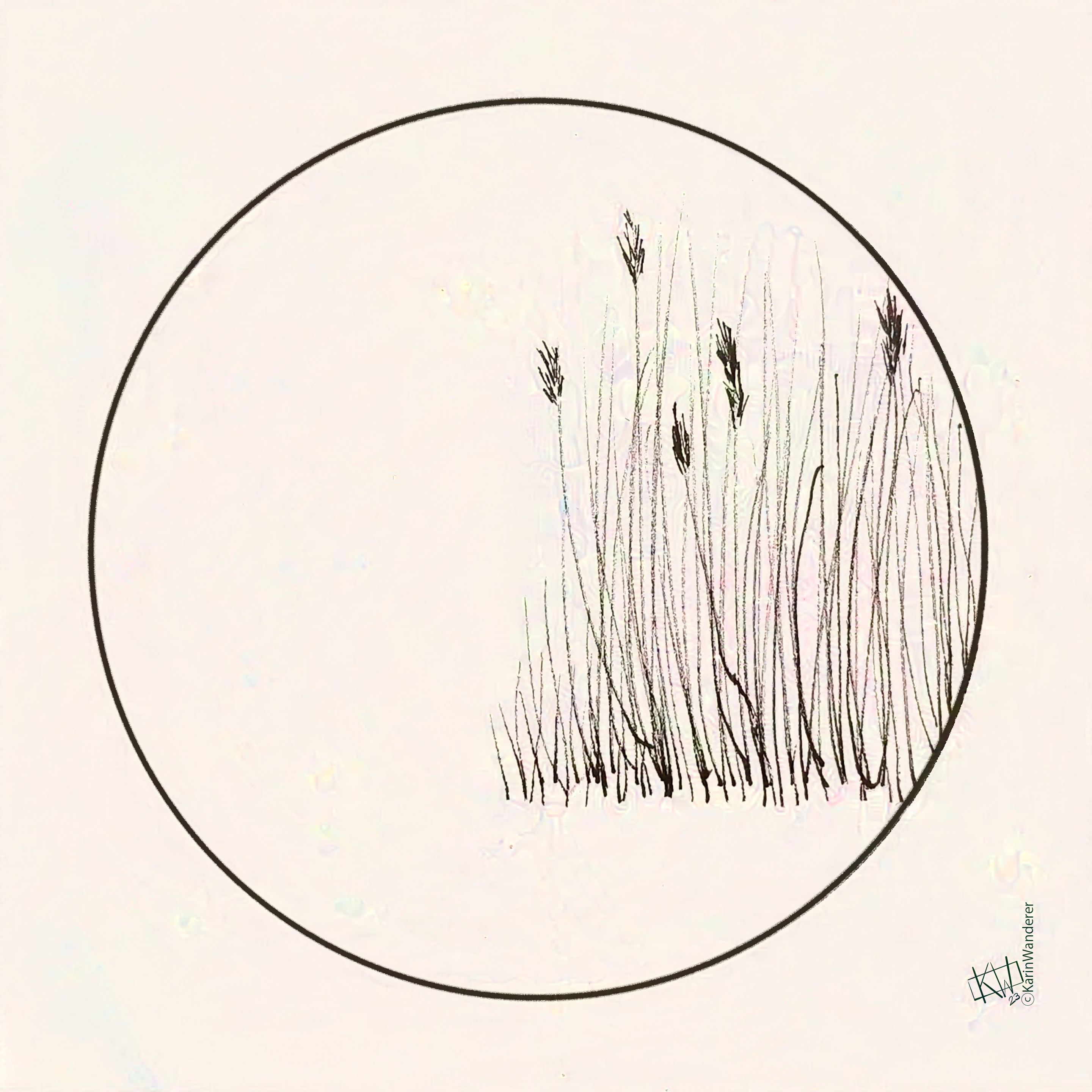
Why I Love It
Line art is a flexible style that can be just about anything you want it to be. It can be a painstaking, detail-focused work. It can also embrace imperfections like shaky lines. For me, drawing line art is very relaxing. A major challenge I face is falling into a groove & drawing more lines than I initially intended.
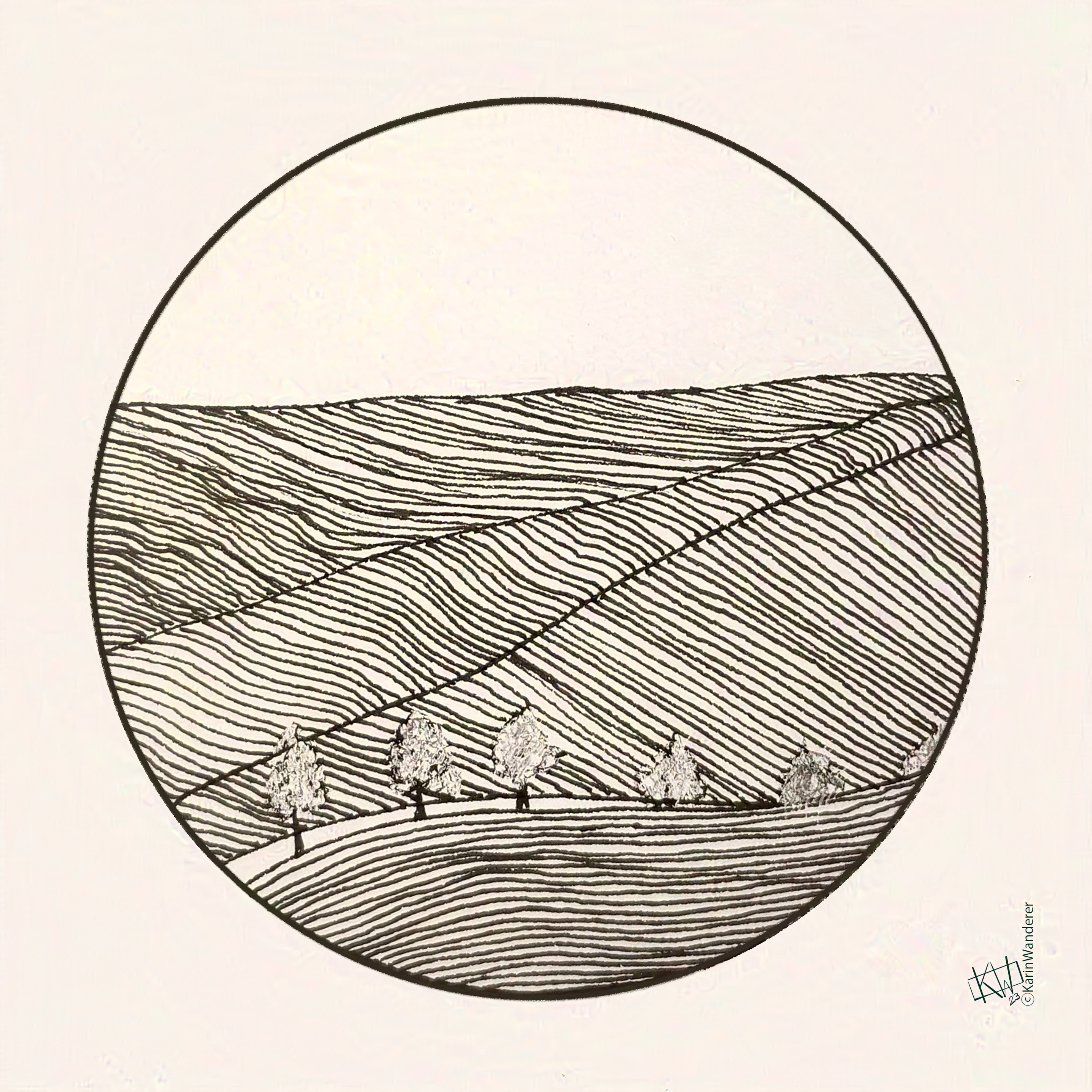 Did this need so many lines? Heck no. Did I enjoy drawing so many lines? Heck yes!
Did this need so many lines? Heck no. Did I enjoy drawing so many lines? Heck yes!
Line Art Exercises
By now you are no doubt vibrating with excitement, abuzz with the very idea of creating your very own line art! Why not? You only need a pen & some paper to get started! Below are 2 easy Line Art exercises you can try:
Blind Contour Drawing
- Pick a familiar object: pens, scissors, & coffee mugs are all popular choices.
- You need a space larger than your paper so your arm can move freely without knocking into things, especially for this exercise. Clear anything you may bump into out of reach.
- Place the object you’ve chosen a few inches away from your paper. You want to be able to look at it without having the paper in your eye line. It can help, if you are a lefty, to put the object slightly to the right (& vice versa) instead of straight ahead of you, so that when you look at the object you are looking away from your drawing hand.
- Position your pen near the middle of the paper. This makes it less likely you will draw off the edge by mistake.
- Look carefully at the object you have chosen. Without looking at your paper, draw the object. You can use many separate lines, or one continuous line. You can add as much detail as you like.
That’s it! I love drawing these. They always come out so differently than what I’m expecting! The example of blind contour drawing below was made with one continuous line. I thought it would help me stay a little more on track? Maybe it did.
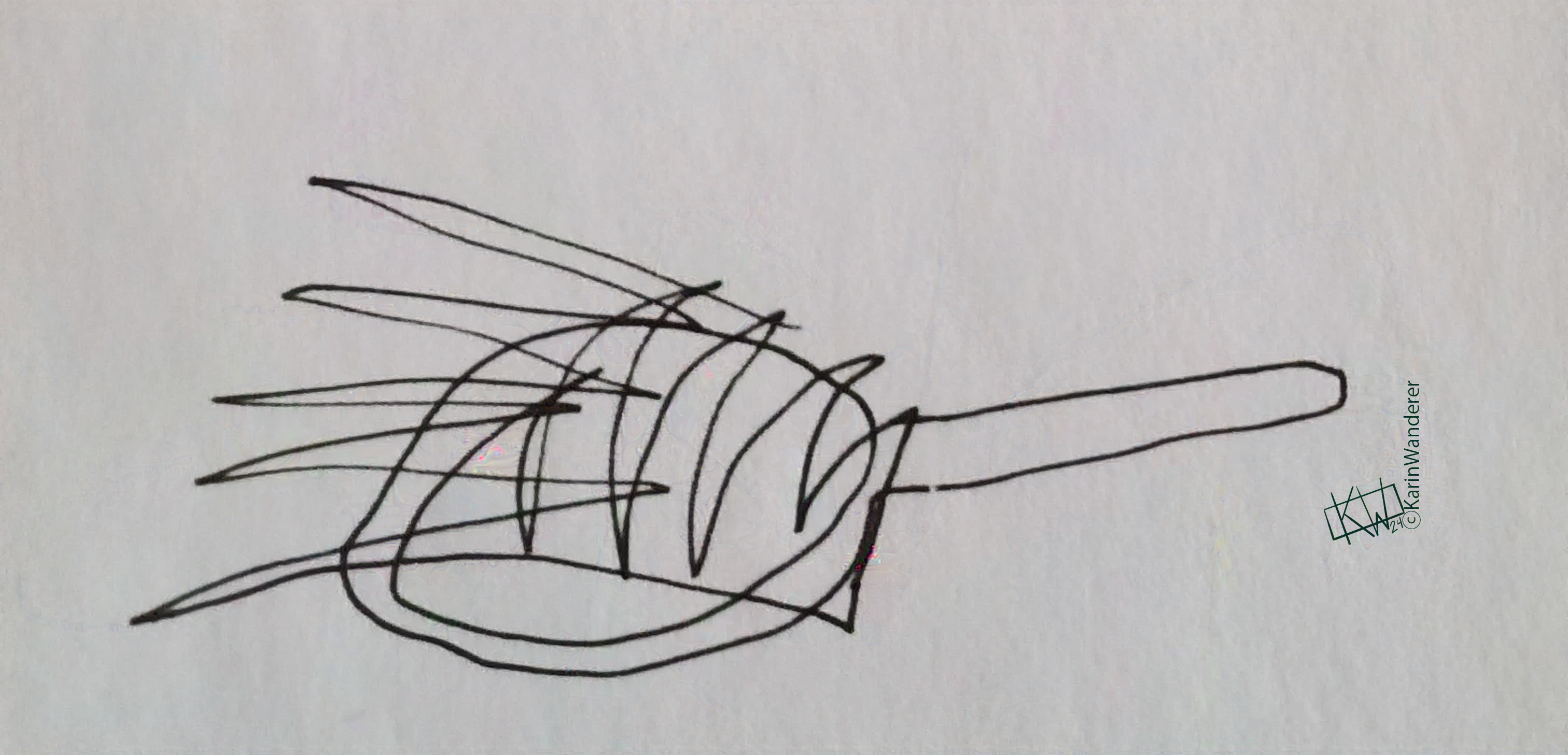 Feast your eyes on this wire mesh strainer, ye mighty, & despair!
Feast your eyes on this wire mesh strainer, ye mighty, & despair!
Contour Drawing
- Pick a familiar object: pens, scissors, & coffee mugs are all popular choices. If you did the Blind Contour Drawing, above, it can be interesting to use the same object for this exercise.
- Place the object you’ve chosen a few inches away from your paper.
- Look carefully at the object you have chosen.
- Draw the object. You can use many separate lines, or one continuous line. You can add as much detail as you like.
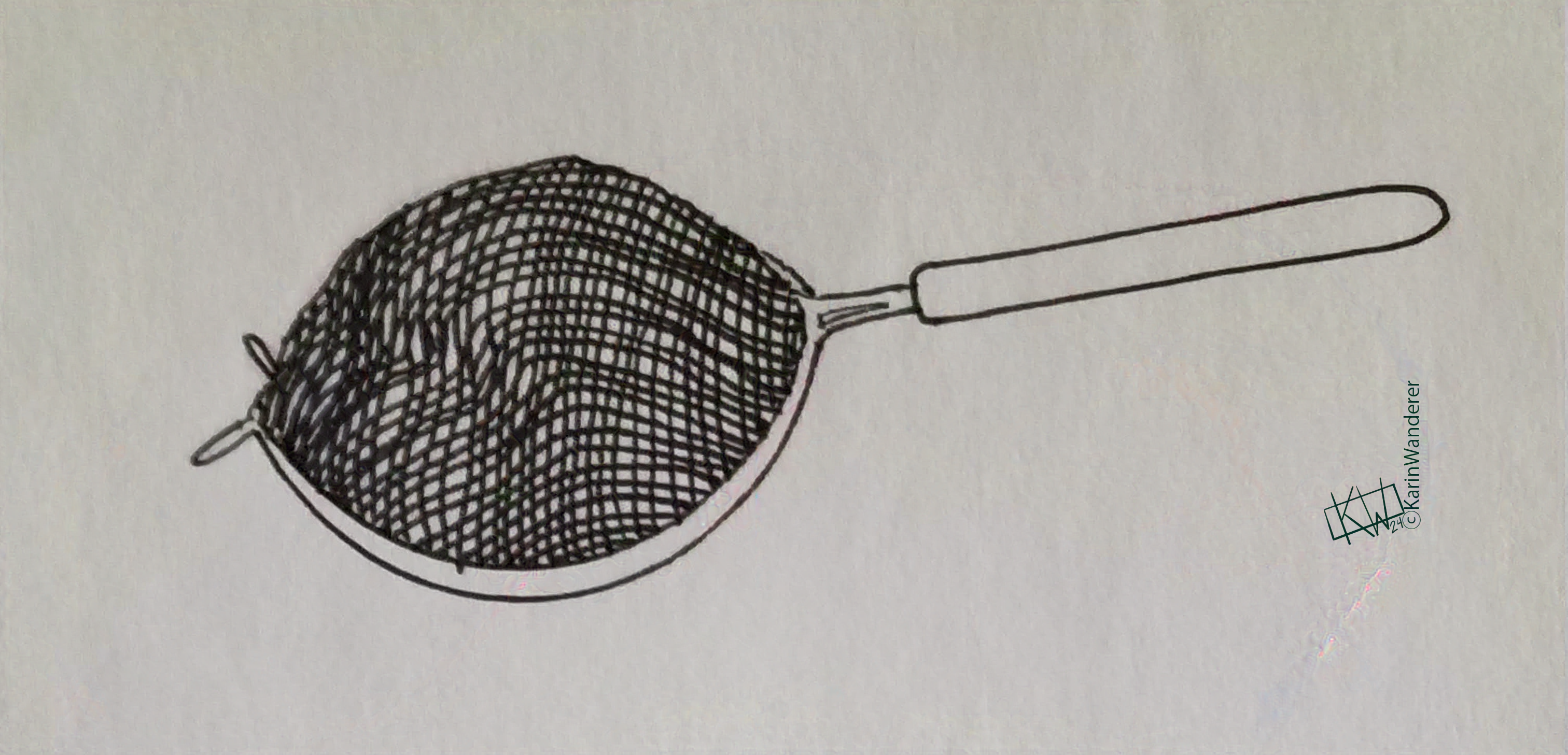 Now feast your eyes on this wire mesh strainer, ye mighty, & despair!
Now feast your eyes on this wire mesh strainer, ye mighty, & despair!
If you try either of these drawing exercises, share it with me or tag me! I’d love to see what you draw on Mastodon, Ko-Fi, or BlueSky!
Get my art on mugs & vinyl stickers in my Shop!
Donate to support my works & get cool perks on Ko-Fi
Join us for #ArtABCs, the best art challenge on the internet!
Find me
- All pictures posted are my own work.
- All reviews are my own unpaid & unsolicited opinions.